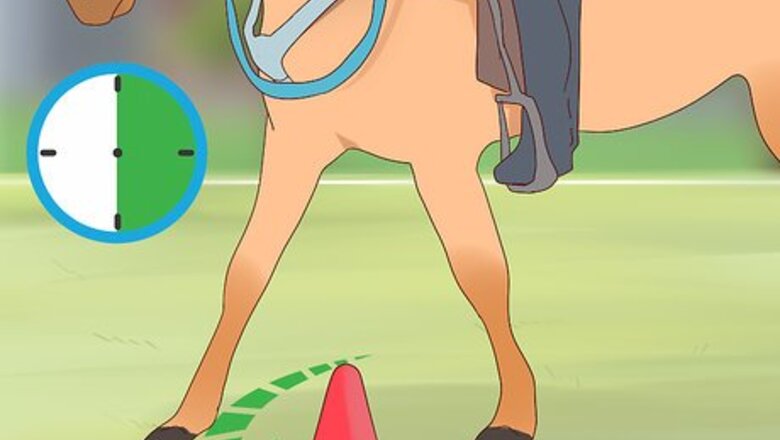
views
Using Your Eyes and Reins
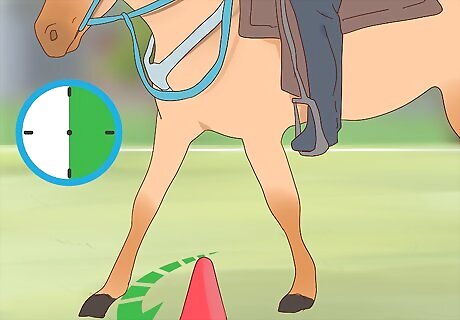
Practice turning exercises for 30-45 minute intervals, 2-3 times per week. Turning is one of the core skills that you need when you’re learning how to ride. Try to set aside some time each week to practice turning as much as you can. Set up a large square using cones and make sure that you have plenty of space to work. Practice guiding your horse around each cone and then keeping your horse moving straight until you reach the next cone. It’s best to practice turning at a walk first. Then move onto practicing turns at a trot and a canter when you feel more confident. There is no specific size that the square should be. All that matters is that your horse has plenty of room to move and that you have enough time to practice your cues between each cone.
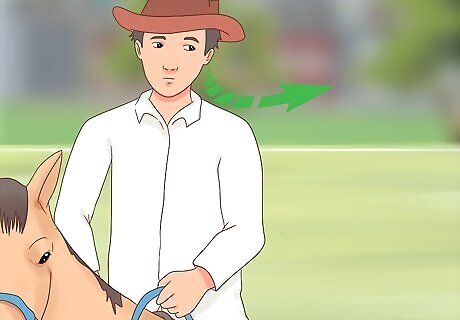
Look in the direction that you want your horse to turn. Your horse can start picking up your turning cues just by feeling a subtle shift in where you are looking. If you want your horse to turn to the right, look towards the right and vice versa to begin turning left. Aim to look straight ahead between your horse’s ears at any fences, trees, or buildings that you can see, rather than directly down at the ground. By simply turning your head, your body starts giving your horse tiny signals that indicate turning soon. This is because your hips, pelvis, seat bones, and legs all shift slightly without you even realizing just by turning your head. Always look in the correct direction, as otherwise, your horse can easily get confused and won’t understand what way you want to turn.
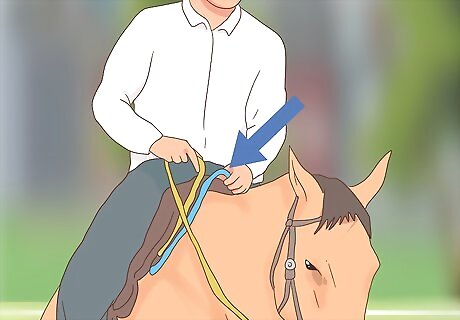
Open the inside rein to encourage your horse to bend into the corner. Begin by holding the reins with even pressure on your horse’s neck, keeping your shoulders, elbows, and forearms relaxed in a loose “L” shape. To start turning to the left, gently release a small amount of pressure on the left rein so that your horse bends and move into the opening. To turn right, open the right rein slightly instead. This allows your horse to look where it’s going so that it can prepare its body to turn. Horses that can look where they are going will turn better and are more balanced.
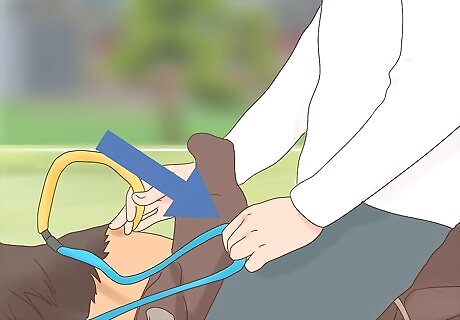
Keep the same pressure on the outside rein to help guide your horse. While your inside rein and hand are opening, it’s important to be conscious of keeping the outside rein steady. Keep moving your hands with your horse's movements but don’t open the outside rein at all. This sends mixed signals that confuse your horse. Let your outside rein and hand remain steady at your horse’s neck. This encourages your horse to move into the inside rein, as the outside rein is less open and applies slightly more pressure.
Signalling with Your Legs and Seat
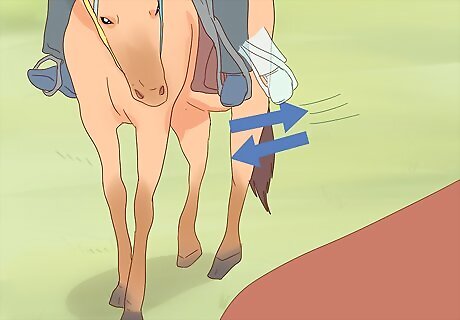
Open your outside leg slightly to help your horse bend around it. When your horse is moving straight, both of your legs apply equal pressure and are in the same position. To continue cueing your horse to turn right, release a small amount of pressure on your right leg so that your horse can move into the turn. Similarly, to turn left, release the pressure slightly on your left leg. It’s okay if your inside leg moves back from the girth very slightly as you do this.
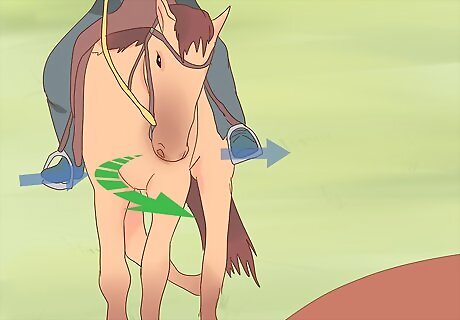
Apply gentle pressure with your outside leg to encourage your horse. As you release the pressure with your inside leg, apply slightly more pressure with your outside leg. For example, if you were turning left, open your left leg slightly and use your right leg to push your horse lightly in the left direction. Horses tend to move away from greater pressure and towards where the pressure is less.
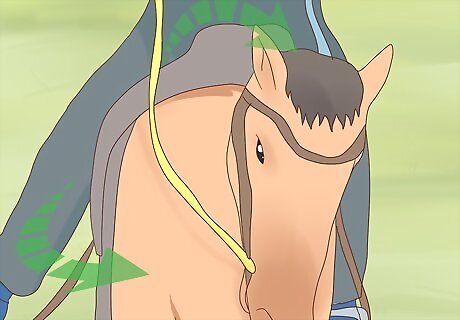
Shift the weight in your seat slightly to the inside. As you apply your rein and leg cues to turn, very slightly shift the weight in your seat towards the inside or the center of the turn. For example, as you turn left, gently shift a small amount of weight into your left seat bone. Your right seat bone becomes slightly lighter and your horse turns so that the weight is under its center of gravity. Shifting the weight in your seat takes a lot of practice to get right. It’s important that your back remains straight and relaxed so that you can continue to give smooth cues. It's also important that you don’t slump to one side as you shift your weight.
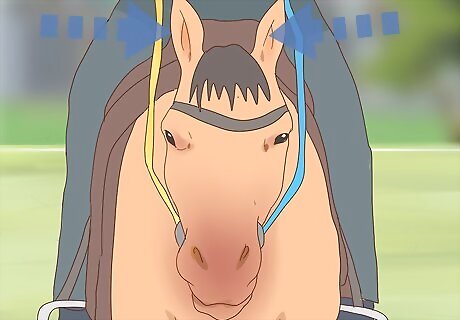
Return to your straight, regular position after completing the turn. It’s important to stop giving turning cues once your horse has turned enough, as otherwise, your horse will keep turning! Redistribute the weight on your seat bones evenly and use light, equal contact with both legs. Stop opening the inside rein and instead go back to applying even, light pressure with both hands. It can be difficult to know if you are positioned correctly and giving the right cues again after you have finished turning. Getting a friend or a trainer to watch how you change your cues can make a huge difference.



















Comments
0 comment